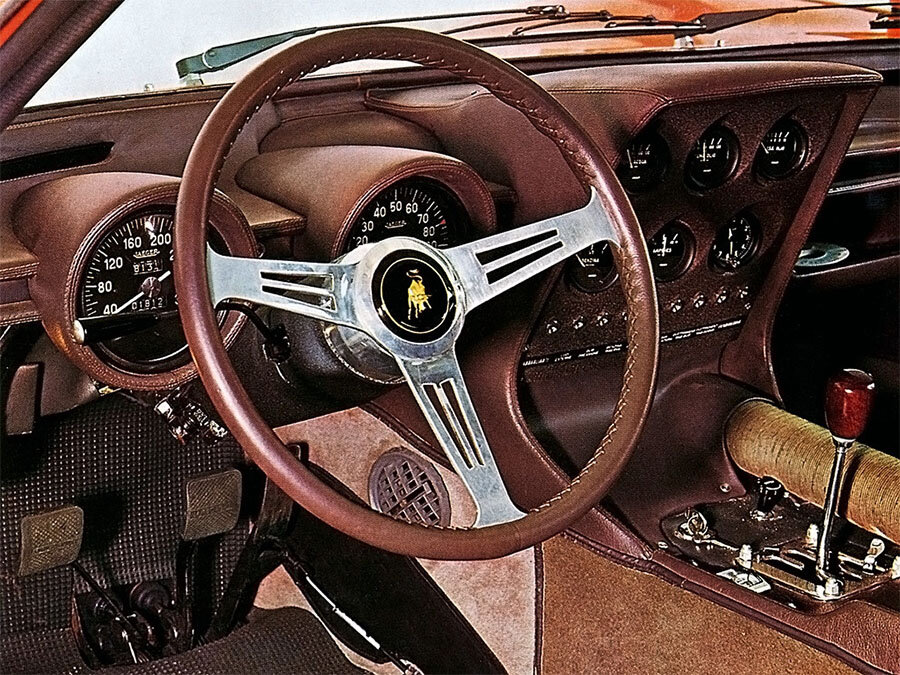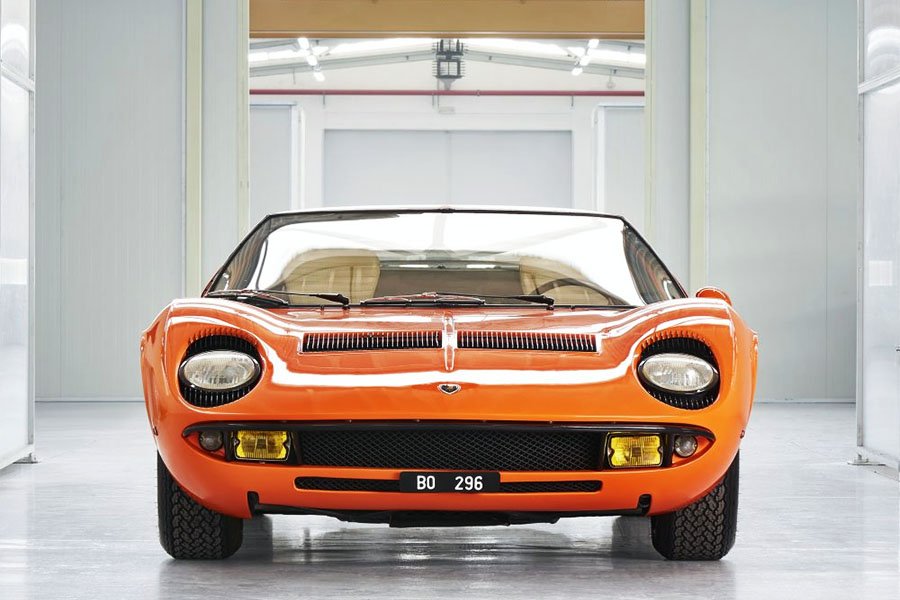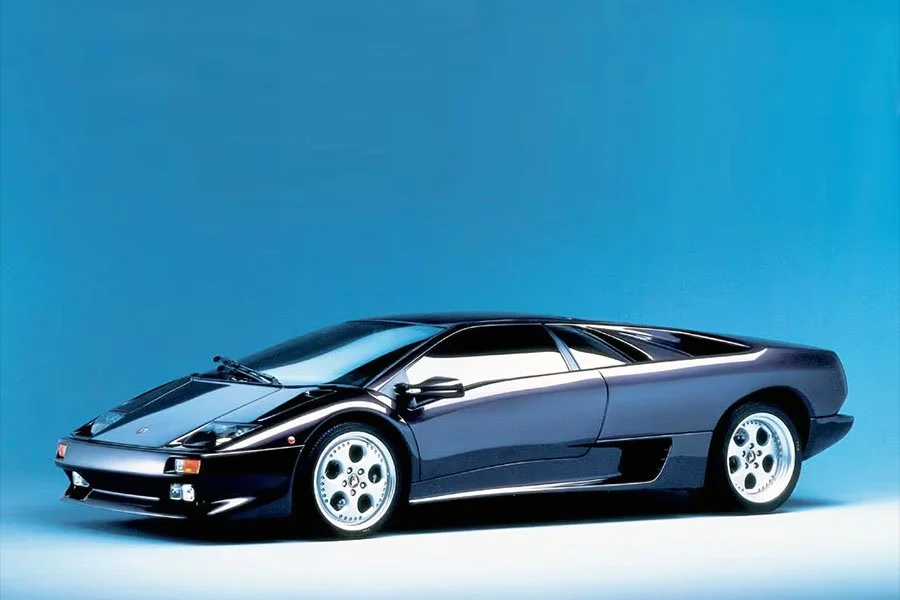Guide: a Thoroughbred GT40 the Italian Way - a Historical & Technical Appraisal of the Lamborghini Miura P400
/BACKGROUND
By the winter of 1964-1965, production at Ferruccio Lamborghini’s state-of-the-art automotive factory in Sant’Agata was in full swing.
The critically acclaimed 350 GT (launched at the Geneva Motor Show in March ‘64) had been well received by journalists and customers alike. The 350 GT’s exceptional build quality, outstanding technical specification and handsome bodywork ensured it was a compelling alternative to any Ferrari or Maserati.
Rather than use an off-the-shelf engine from another manufacturer, Ferruccio Lamborghini had commissioned renowned designer, Giotto Bizzarrini, to create a brand new dual overhead camshaft V12. Various iterations of the Bizzarrini V12 would power Lamborghini’s flagship models for more than 40 years.
Once his work was finished, Bizzarrini parted ways with Automobili Lamborghini because there was no prospect of the new company going racing.
However, despite Bizzarrini’s departure, Lamborghini retained several ambitious employees that wanted to build the ultimate super sports car of its day, even if racing was out of the question.
In secret, Lamborghini’s chief designer, Gian Paolo Dallara, technical director, Paolo Stanzani, and chief test driver, Bob Wallace, began to make plans for a mid-engined tour-de-force that would really put Lamborghini on the map.
Together, the trio spent many evenings formulating the new design.
At the time, the only large displacement road car available with a mid-engine configuration was the Mk1 Ford GT40. The GT40 was offered in street specification from spring 1965 to help Ford meet the 50 car homologation requirement for Group 4 racing that would come into effect from 1966.
Alongside the hush-hush new mid-engined Lamborghini, work took place on enlarging the firm’s 3.5-litre V12 to a four-litre displacement.
Having been informed about his employee’s secret project in mid 1965, Ferruccio Lamborghini gave his blessing thinking the new car might serve as a useful marketing tool. A rolling chassis was then displayed at the Turin Motor Show in November 1965 where it caused a sensation.
A completed car, with bodywork by Bertone, was presented at the Geneva Motor Show in March 1966.
Dubbed Miura, it was launched alongside a new 2+2 version of the recently introduced 400 GT.
Expressions of interest for the Miura flooded in. The response was so overwhelming that Ferruccio Lamborghini gave the go-ahead for production.
After an intense development programme, customer deliveries began twelve months later.
CHASSIS
The Miura was based upon a brand new steel monocoque with tubular front and rear subframes. The wheelbase measured 2500mm and the whole assembly was drilled to make it as light as possible.
Construction of production chassis was handled by Marchesi in Modena.
The prototype chassis (0502) was fabricated from 0.8mm gauge steel. This was increased to 0.9mm gauge steel thereafter.
Suspension was via double wishbones, coil springs and telescopic dampers. Anti-roll bars were installed at either end.
Non servo-assisted Girling disc brakes ran off a separate hydraulic circuit for each axle. The front discs had a 305mm diameter while those at the rear measured 279mm.
Handsome new centre-lock magnesium alloy wheels were created by Campagnolo. They measured 15 x 7-inches all round and were originally shod with Pirelli Cinturato tyres.
A 90-litre fuel tank was installed over the front axle which enabled the back end of the car to accommodate a usefully sized trunk.
Weight distribution was 44.5% front and 55.5% rear.
ENGINE / TRANSMISSION
The Bizzarrini-designed 60° V12 was transversely mounted in the chassis. To save space, the engine, gearbox and differential were formed in unit and shared the same wet-sump lubrication system.
Bizzarrini’s formidable engine featured an all-alloy construction and chain-driven dual overhead camshafts. Ignition was via a single spark plug per cylinder, two coils and two Marelli distributors.
As per the rest of Lamborghini’s four-litre range, displacement was 3929cc thanks to a bore and stroke of 82mm and 62mm respectively.
A compression ratio of 9.5:1 was employed along with four triple choke Weber 40 IDL 3C downdraught carburettors.
In this configuration, peak output was 350bhp at 7000rpm and 271lb-ft at 5100rpm.
Transmission was via a five-speed transaxle with a single-plate clutch. A competition-spec. Borg & Beck triple-plate clutch had been used in the prototype, but as it needed to be changed every 3000km, a conventional clutch was fitted to production cars.
BODYWORK
Having commissioned Franco Scaglione to design the prototype 350 GTV of 1963, Ferruccio Lamborghini turned to Carrozzeria Touring of Milan to refine and manufacture the subsequent 350 GT production car.
However, by late 1965, it was clear Touring were in financial difficulty.
As a result, for the Miura, Lamborghini teamed up with Carrozzeria Bertone of Turin.
Nuccio Bertone handed the job to stylist, Marcello Gandini, who created one of the most beautiful automobiles of all time.
At the front, retractable headlights were mounted inboard of black slatted eyebrows that gave the Miura a unique look. Further up the front lid, more black slats were used to cover a pair of rectangular vents. One of these slatted banks could be raised for access to the fuel filler cap.
Supplementary front lighting was housed in a full width nose aperture topped by a slim satin black bumper.
At the back of each door, Gandini added an unusual vertical bank of grilles that fed cool air into the engine bay.
The slatted theme continued at the back of the car where six satin black panels replaced a conventional fastback screen. To insulate the cockpit from engine noise, a vertical glass screen was fitted behind the seats.
A Kamm tail fascia was home to custom tail light clusters mounted above another full width aperture that was filled with a hexagonally-patterned grille.
The single piece front and rear clamshells were formed from aluminium. The doors, roof and centre section were steel.
INTERIOR
As per the exterior, an equally spectacular cockpit was created.
Directly behind the wood or sometimes leather-rimmed three-spoke steering wheel was a 320kmh speedometer and a 10,000rpm rev counter. Each was housed in an individual cowl.
The rest of the instrumentation was located in an arced centre console that swept down to join the transmission tunnel. The half dozen additional gauges were stacked in two horizontal banks of three. Read outs for water temperature, oil temperature, oil pressure, fuel and battery condition were provided along with a clock.
The switchgear was variously mounted around the open gate gear lever and on a small roof-mounted console.
The dash was upholstered in leather. The floors, sidewalls and rear bulkhead were carpeted.
Despite the Miura’s extremely high price, manual window winders were standard and the bucket seats were trimmed in vinyl to match the door panels. Moreover, the seats could only be adjusted fore / aft.
OPTIONS
Velour seat centres were an optional extra.
Customers could also choose from silver or gold side sills and wheels.
WEIGHT / PERFORMANCE
Lamborghini quoted a kerb weight of 1293kg, a top speed of 172mph and 0-62mph time of just six seconds.
PROTOTYPES
The prototype Miura displayed at Geneva in March 1966 changed little in the transition to production trim. Its roofline was slightly raised and the fastback Plexiglas rear screen was replaced by the distinctive bank of matt black slats which became much copied in later years.
After taking its bow at Geneva, chassis 0502 acted as the pace car for the 1966 Monaco Grand Prix.
0502 was then joined by two other pre-production cars that served as prototypes (0706 and 0862).
PRODUCTION
Series production began in March 1967. The process saw each naked chassis shipped from Marchesi in Modena to Bertone in Turin. Here, bodies and interiors were fitted. Each car was then transported back to the Lamborghini factory at Sant’Agata for completion.
SWITCH TO 1MM GAUGE CHASSIS
The first update arrived in January 1968 when the 0.9mm gauge chassis was switched to 1mm gauge.
By this time, 121 Miuras are understood to have been completed with the 0.9mm chassis.
MIURA ROADSTER
January 1968 also marked the arrival of a Miura Roadster (chassis 3498) which was displayed at the Brussels Motor Show.
Bertone had created the car in secret. When it was shown to Ferruccio Lamborghini, the boss was not impressed and refused to sanction a production version.
In its transformation to Roadster configuration, Bertone had made a series of significant modifications. Most importantly, to compensate for the structural rigidity lost by cutting away the roof, the box section side members and roll-over bar had been reinforced. The roll-over bar itself was lowered as was the windscreen which helped improve aerodynamics.
An entirely new rear clam was fitted. It did away with the original slatted fastback profile in favour of a flattened central section that left the transversely mounted engine partially exposed.
Bigger shoulder mounted intakes were added and the rear fenders were re-profiled.
The engine surround was painted grey in contrast to the rest of the body which was a light metal-flake blue.
The tail fascia was made deeper and given a new vertically slatted grille through which the twin exhausts exited (unlike on the standard car where they emerged from underneath the bodywork).
New tail lights were installed that would later be adopted on some Miura SVs.
No roof panel was ever made which left the interior open to the elements.
The cockpit was upholstered in white leather with red carpets. A Marzal-style steering wheel was fitted and the normally roof-mounted switchgear was moved to the central console.
After starring at Brussels, chassis 3498 was displayed at the Geneva Motor Show in March. However, Ferruccio Lamborghini did not change his mind about the proposal and it remained a one-off.
LEATHER INTERIOR OPTION
From April 1968, Miura customers could order their cars with an optional leather interior.
END OF PRODUCTION
Production ended in late 1969.
By this time, 275 P400 Miuras had been completed.
Of these, around a dozen were right-hand drive.
The replacement Miura S offered a number of mechanical and cosmetic improvements.
Text copyright: Supercar Nostalgia
Photo copyright: Lamborghini - https://www.lamborghini.com











































